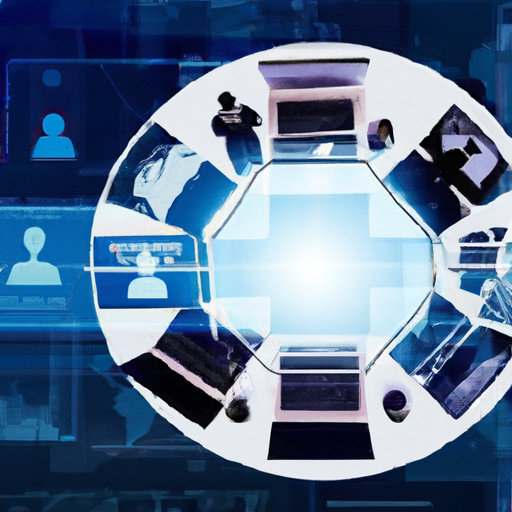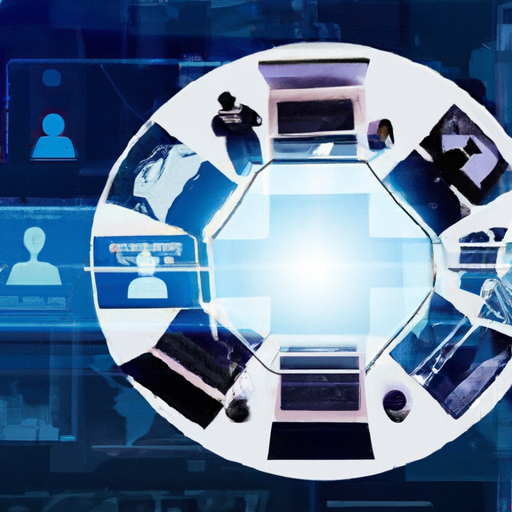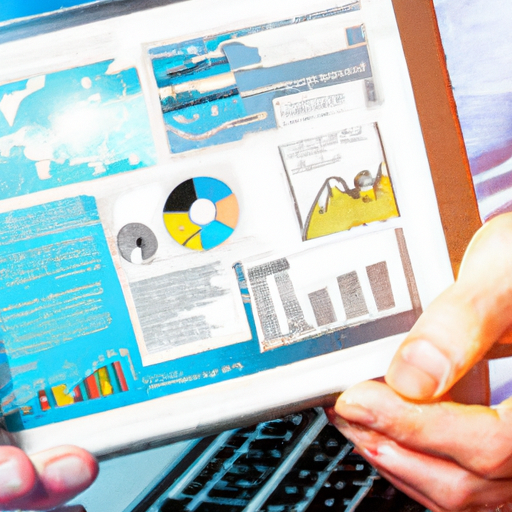Conference Room Technology Trends
In this article, you will explore the latest trends in conference room technology. From state-of-the-art audiovisual systems to intelligent meeting room booking solutions, these advancements are revolutionizing the way businesses collaborate. We will delve into the seamless integration of video conferencing platforms, interactive display screens, and smart automation to enhance productivity and streamline communication. So, buckle up and get ready to explore the exciting world of conference room technology trends.

Table of Contents
Wireless Connectivity
In today’s modern conference rooms, wireless connectivity is a crucial component for seamless and efficient communication. Gone are the days when you had to deal with messy cables and tangled wires. With wireless connectivity, you can easily connect and share information without the hassle of physical connections.
Wireless Presentation Systems
One of the most popular conference room technology trends is the adoption of wireless presentation systems. These systems allow you to wirelessly connect your device, such as a laptop or smartphone, to the conference room display or projector. With just a few clicks, you can start sharing your screen and presenting your ideas to the team. Wireless presentation systems not only eliminate the need for cables but also enable multiple presenters to switch seamlessly, making meetings more dynamic and engaging.
Wireless Charging
Another trend in conference room technology is the integration of wireless charging capabilities. With wireless charging pads or stations, you can simply place your compatible device on the surface, and it will begin charging without the need for cables or adapters. This eliminates the hassle of searching for power outlets and dealing with tangled cords. Wireless charging technology not only keeps your devices powered up but also helps to maintain an organized and clutter-free conference room environment.
Wireless Audio Solutions
Gone are the days of tangled microphone cables and restricted movement during conference calls. Wireless audio solutions have revolutionized the way we communicate in conference rooms. Whether it’s a wireless microphone or a speaker system, these technologies provide the freedom to move around the room without being tethered to a specific spot. This enables more natural and interactive discussions, ensuring that everyone’s voice is heard clearly.
Video Conferencing
With the rise of remote work and global collaboration, video conferencing has become an integral part of conference room technology. High-definition video conferencing allows participants to connect face-to-face, regardless of their physical location.
High-Definition Video Conferencing
High-definition video conferencing systems provide crystal-clear video quality, capturing even the subtlest facial expressions and gestures. This enhances communication and fosters a sense of presence, as if all participants are in the same room. HD video conferencing also enables screen sharing and content collaboration, making it easier to present information and collaborate on projects remotely.
Cloud-Based Video Conferencing Solutions
Cloud-based video conferencing solutions have gained significant traction in recent years. These platforms offer the flexibility and scalability to host virtual meetings with participants from all over the world. With cloud-based video conferencing, you can simply log in to the platform from any internet-connected device and start or join a meeting. The cloud storage and integration capabilities also make it easier to manage and share meeting recordings and documents.
Virtual Reality (VR) Conferencing
Virtual reality conferencing is an emerging trend that takes video conferencing to the next level. With VR headsets and cameras, participants can immerse themselves in a virtual environment and interact with each other as avatars. This adds a new dimension of engagement and simulates the feeling of being physically present in the same room. VR conferencing has the potential to revolutionize remote meetings and create a more immersive and collaborative experience for all participants.
Collaborative Tools
Collaboration lies at the heart of every successful meeting. Leveraging collaborative tools in conference rooms can significantly enhance productivity and drive innovation.
Interactive Whiteboards
Interactive whiteboards combine the functionality of traditional whiteboards with the power of digital technology. These interactive displays allow you to write, draw, and annotate digitally, making it easier to brainstorm ideas and visualize concepts in real-time. You can also save and share the whiteboard content instantly, ensuring that everyone has access to the information discussed during the meeting.
Real-Time Collaboration Software
Real-time collaboration software enables multiple participants to work on the same document simultaneously. Whether it’s a presentation, spreadsheet, or project plan, everyone can contribute and make edits in real-time. This fosters a sense of teamwork and streamlines the decision-making process. Real-time collaboration software also ensures that everyone is on the same page and eliminates the need for back-and-forth email communication.
Document Sharing and Annotation Tools
Sharing and annotating documents are essential aspects of productive meetings. With document sharing and annotation tools, you can easily upload documents, presentations, or images and share them with the participants. These tools also allow you to highlight, underline, or add comments to the shared content, encouraging active engagement and discussion during the meeting. The ability to save and distribute annotated documents further enhances collaboration and knowledge sharing.
Smart Boards
Smart boards have revolutionized the way we interact with conference room technology. These interactive displays offer a host of features that enhance collaboration and streamline meeting processes.
Gesture and Touch-Based Controls
Smart boards with gesture and touch-based controls provide an intuitive and user-friendly experience. You can navigate through presentations, zoom in and out, and interact with content using simple gestures or by directly touching the screen. This eliminates the need for additional peripherals and enhances the overall user experience. Gesture and touch-based controls make it easier to engage with the smart board and foster a more interactive meeting environment.
Integrated Video Cameras for Video Conferencing
Smart boards often come equipped with integrated video cameras, enabling seamless video conferencing without the need for external devices. This simplifies the setup process and ensures that participants can be seen and heard clearly during remote meetings. Integrated video cameras also eliminate the need for additional cables or equipment, reducing clutter in the conference room.
Cloud-Based Storage and Access
Cloud-based storage and access are essential features of smart boards that cater to the increasing need for centralized and easily accessible information. With cloud integration, you can save and retrieve files, presentations, and meeting notes directly from the smart board. This enables seamless collaboration, even outside the conference room, and ensures that everyone has access to the latest version of documents discussed during the meeting.
Voice Control
Voice control has become a prominent feature in many conference room technologies, providing a hands-free and convenient way to control various aspects of the meeting environment.
Voice-Activated Systems for Room Control
Voice-activated systems enable you to control various aspects of the conference room environment through voice commands. From adjusting the lighting and temperature to controlling the audiovisual equipment, voice activation simplifies the meeting setup process and enhances the overall user experience. With just a few spoken words, you can create a comfortable and productive environment for your meeting.
Voice-Assisted Note Taking and Transcription
Taking meeting notes can be a tedious task that often distracts from the actual discussion. Voice-assisted note-taking and transcription tools alleviate this challenge by converting spoken words into written text in real-time. These tools enable you to focus on the conversation while capturing accurate and detailed meeting minutes. Voice-assisted note-taking not only saves time but also ensures that no crucial information is missed during the meeting.
Integration with Voice-Activated Virtual Assistants
Integration with voice-activated virtual assistants, such as Amazon Alexa or Google Assistant, brings an added level of convenience to conference rooms. You can use voice commands to schedule meetings, set reminders, search for information, and perform various tasks hands-free. Voice-activated virtual assistants make it easier to manage your conference room activities and streamline your workflow.
Artificial Intelligence (AI)
Artificial intelligence is making significant strides in transforming conference room technology. AI-powered solutions improve meeting efficiency, enhance communication, and automate routine tasks.
AI-Powered Meeting Assistants
AI-powered meeting assistants are designed to optimize meeting processes and drive productivity. These assistants can help with tasks such as scheduling meetings, sending invitations, and setting reminders. They can also analyze meeting data, provide actionable insights, and suggest improvements for future meetings. AI-powered meeting assistants streamline meeting management and ensure that meetings are more focused and outcome-oriented.
Real-Time Language Translation
Language barriers can hamper effective communication during international meetings. AI-powered real-time language translation eliminates this challenge by translating spoken words into different languages instantly. With real-time language translation, participants can understand and respond to each other in their native languages, fostering a more inclusive and collaborative meeting environment. This breakthrough technology breaks down language barriers and opens up opportunities for global collaboration.
Smart Scheduling and Room Optimization
AI-powered scheduling systems can analyze the availability and preferences of participants to schedule meetings at the most optimal times. These systems take into account factors such as time zones, meeting durations, and individual schedules to ensure that everyone can attend the meeting without conflicts. AI algorithms can also optimize room utilization by analyzing usage patterns, suggesting better room allocations, and even automatically adjusting the room setup based on meeting requirements.
Internet of Things (IoT)
The Internet of Things (IoT) has gained significant momentum in the conference room technology landscape. IoT devices enhance automation, increase energy efficiency, and create a more connected and intelligent meeting environment.
Smart Sensors for Occupancy Detection
Smart sensors installed in conference rooms can detect human presence and occupancy levels. This information can be utilized to automate various aspects of the conference room environment. For example, the sensors can turn on lights and adjust temperature settings when participants enter the room. Smart sensors help create a more energy-efficient and comfortable meeting space while minimizing unnecessary power consumption.
Automated Control of Lights and Temperature
IoT technologies enable the automation of lighting and temperature control in conference rooms. In addition to occupancy detection, sensors can also monitor ambient lighting and temperature levels, making adjustments accordingly. Automated lighting and temperature control not only create a personalized and comfortable environment but also contribute to energy conservation by minimizing electricity usage when the room is unoccupied.
Integration with Other IoT Devices in the Office Ecosystem
Conference room IoT devices can be seamlessly integrated with other IoT devices present in the office ecosystem. For example, integration with smart thermostats, intelligent lighting systems, and security devices can create a unified and interconnected workplace environment. This integration enhances the overall functionality and efficiency of the conference room while providing a seamless user experience.
Virtual Reality (VR)
Virtual reality technology is expanding its presence in conference rooms, offering immersive and engaging experiences for presentations, training, and collaboration.
Virtual Tours and 360-Degree Video Presentations
Virtual tours and 360-degree video presentations provide a unique and immersive way to showcase products, venues, or facilities in conference rooms. With VR headsets or screens, participants can explore virtual environments or enjoy captivating videos that encompass their entire field of view. This technology adds a visual impact to presentations and brings a new level of engagement to meetings.
Immersive Training and Simulations
VR technology is being increasingly utilized for training purposes in conference rooms. Immersive simulations allow participants to practice skills and scenarios in a realistic and controlled virtual environment. For instance, employees can undergo virtual safety drills or customer service simulations to enhance their skills and knowledge. VR-based training promotes active learning, reduces training costs, and provides a safe space for employees to practice and learn from their mistakes.
Virtual Collaboration Spaces
Virtual collaboration spaces leverage VR technology to create digital meeting rooms that simulate physical environments. Participants can interact with each other and with digital content using VR headsets or controllers, fostering a more engaging and interactive collaboration experience. Virtual collaboration spaces also enable remote teams to work together in a more immersive and natural way, breaking down geographical barriers and enhancing teamwork.
Augmented Reality (AR)
Augmented reality technology is gaining traction in conference rooms, offering innovative ways to enhance presentations, troubleshoot technical issues, and facilitate brainstorming sessions.
AR Overlays for Presentations and Visual Aids
AR overlays can be used to enhance presentations by adding interactive and dynamic elements to static content. For example, you can use AR to overlay additional information, 3D models, or animations onto printed materials or projected images. This creates a more engaging and visually impactful presentation experience, capturing the audience’s attention and making information easier to comprehend and remember.
AR-Enabled Remote Assistance and Troubleshooting
In conference rooms, AR technology can be used for remote assistance and troubleshooting. With AR-enabled devices, technicians or experts can guide others through complex processes or repairs by overlaying instructions, diagrams, or annotations onto the real-world view. This facilitates real-time collaboration and reduces the need for physical presence, saving time and resources. AR-enabled remote assistance ensures faster problem-solving and improves technical support capabilities.
Interactive AR-Driven Brainstorming Sessions
AR technology opens up new possibilities for collaborative brainstorming sessions in conference rooms. Participants can use AR to visualize and interact with digital content, such as virtual whiteboards or 3D models, in real-world settings. AR-driven brainstorming sessions promote creativity, prompt innovative ideas, and enable more interactive discussions. This technology transforms traditional brainstorming sessions into dynamic and engaging experiences that fuel collaboration and problem-solving.
Room Booking Systems
Efficient room booking systems are essential for managing conference room availability and ensuring smooth scheduling of meetings.
Interactive Touch Panels for Room Reservation
Interactive touch panels provide a user-friendly interface for booking conference rooms. With these panels, you can view the availability and details of different rooms, select the desired time slot, and make reservations on the spot. Touch panels also offer additional features such as displaying room capacity, amenities, and equipment availability, making it easier to choose the most suitable conference room for your meeting.
Integration with Calendar and Scheduling Apps
Room booking systems often integrate with popular calendar and scheduling apps, such as Microsoft Outlook or Google Calendar. This integration allows users to seamlessly check room availability, create or modify meeting invitations, and receive real-time updates on meeting changes. By synchronizing with existing scheduling tools, room booking systems streamline the meeting management process and eliminate potential conflicts or double bookings.
Real-Time Room Availability Updates
Real-time room availability updates provide a clear overview of the conference room status. With digital displays or LED indicators outside each room, employees can quickly see if a room is occupied or available at a glance. This eliminates the need for disruptive interruptions or unnecessary room searches. Real-time room availability updates save time, minimize confusion, and improve overall productivity in the workplace.
In conclusion, conference room technology trends continue to evolve, offering innovative solutions to enhance communication, collaboration, and productivity. Wireless connectivity, video conferencing, collaborative tools, smart boards, voice control, AI, IoT, VR, AR, and room booking systems are all transforming the way we conduct meetings and interact within conference rooms. By embracing these trends, organizations can create more efficient, engaging, and connected conference room environments that facilitate effective teamwork and drive successful outcomes.






